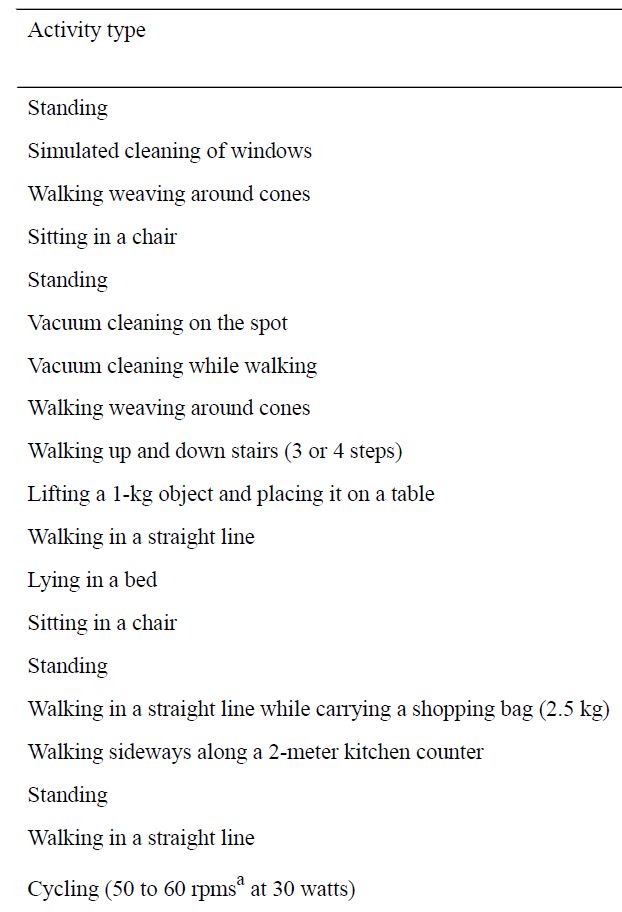Commercially available activity trackers have gained popularity as a self-regulation strategy to adhere to healthy lifestyle behaviours by enabling user self-monitoring and goal-setting, but how accurate are they?
Commercial growth of activity trackers
Figures in activity trackers keep climbing and new products keep entering the market, often, in combination with other health monitoring technology such as tracking of heart rate, breathing rate, sleep activity. Emerging devices are smaller, with innovative designs that take the form of a bracelet, watch, patch, and recently, a ring. While these developments in activity trackers claim to revolutionize healthcare, most seem to be fitness gadgets suited for the younger, healthy population and neglects people with medical conditions. As expressed by Jitesh Ubrani, senior research analyst for International Data Corporation (IDC) Mobile Device Trackers, “…many devices are focusing on fashion first while allowing the technology to blend in with the background”[1], many developers are interested in making wearables cool and fashionable.
Activity trackers as a healthcare tool
The population that can especially benefit from knowledge about their physical activity patterns and has most to gain from improvements in health and lifestyle are people with chronic disease. Furthermore, activity trackers seem to be a good objective and feasible measurement tool for physical therapists and occupational therapists. However, commercial activity trackers seldom provide details on measurement accuracy or reliability, and likewise are not validated in people with medical conditions. Therefore, whether certain trackers can be used during therapy or how accurately they measure activities of daily living in this population is a question. These uncertainties prompted PhD student, Darcy Ummels and a group of researchers at Zuyd University of Applied Sciences, Netherlands to put commercially available activity trackers to the test.
Validity of commercial activity trackers
The goal of the study was to investigate whether commercially available pedometers succeed in accurately counting the steps of people with chronic diseases receiving physiotherapy during activities of daily living [2]. 129 patients diagnosed with one or more of the following chronic diseases: cardiovascular disease, COPD, diabetes mellitus, chronic pain, cancer, or osteoarthritis participated in the study.
A total of 9 activity trackers that record number of steps as one of their outcome variables were selected (Table 1): Accupedo (Corusen LLC), Activ8 (Remedy Distribution Ltd), Digi-Walker CW-700 (Yamax), Fitbit Flex (Fitbit Inc), Lumoback (Lumo Bodytech), Moves (ProtoGeo Oy), Fitbit One (Fitbit Inc), UP24 Jawbone), and the Walking Style X (Omron Healthcare Europe BV).
Ummels and colleagues used a movement protocol based on tasks representing activities of daily living, such as standing, walking and vacuuming. Step counts recorded by the activity trackers were compared to those manually counted from video recordings simultaneously filmed (“gold standard”).
How the activity trackers performed
None of the 9 selected commercially available activity trackers passed the validity test for accurately counting steps during activities of daily living among the diverse group of patients with various chronic diseases receiving physiotherapy in the Netherlands. While existing scientific research showed that all selected activity trackers were accurate based on simple steps counting during treadmill walking, they proved to be less accurate during activities based on “free-living”. All activity trackers underestimated the number of steps taken, except Activ8 which overestimated step count.
A wide range in step count measurements were observed among the activity trackers. For all trackers, step count measured by the activity trackers poorly matched the observed steps (gold standard).
Why is there a difference in step counts?
According to the researchers, this depends on the way in which the sensors built into activity trackers measure the number of steps [2]. During daily (domestic) activities, people often walk too slowly, shuffle or take less distinct steps than the sensors are capable of detecting accurately. This is because the step detection and step counting algorithms used in activity or fitness trackers are made for the general healthy population with normal gait mechanics.
In a published interview with smarthealth in Apr 2018 [3], Ummel feels that “Although activity trackers look more and more attractive, contain more functions and are able to track fitness or sleep more accurately, measuring small, slow movements remains a challenge. Even if you would use the Fitbit Ionic or Apple Watch series 2 for this study, the outcome is likely to remain the same.”
The researchers hope that the study creates awareness among patients and caregivers that commercial activity trackers could underestimate physical activity in people with chronic conditions, especially during activities of daily living.
What is the clinical relevance?
Activity tracking could potentially be useful for people who need a long-term commitment to measuring and tracking their health such as people with chronic diseases and elderly persons with lower ambulatory abilities. However, considering the limitation of commercial activity trackers, a challenge is choosing the right activity tracker that is suited for special populations. For an activity tracker to be useful, it needs to be accurate. Therefore, it should be designed and validated against the target group to be measured.
In partnership with Maastricht University, Ummels and researchers at Zuyd University of Applied Sciences, are part of the LIME innovation program (LImburg MEet focused on the development of innovative measurement products for care) that is currently in the development of an activity tracker that – unlike all commercial trackers – is specially aimed at measuring the physical activity of elderly persons. In addition to step count, the duration of active minutes (including standing) will be measured. This activity tracker is expected to be developed in 2019.
Contact us to find out more.
References
- Fitness Trackers in the Lead as Wearables Market Grows 3.1% in the Third Quarter, According to IDC. Framingham, Massachusetts, USA.
- Ummels, D., et al., Counting Steps in Activities of Daily Living in People With a Chronic Disease Using Nine Commercially Available Fitness Trackers: Cross-Sectional Validity Study. JMIR Mhealth Uhealth, 2018. 6(4): p. e70.
- Jacobs, A., Onderzoek: commerciële fitness trackers schieten tekort voor patiënten met chronische aandoening. 2018: Netherlands.

